Eiko Otake—A Body with Fukushima
A Body with Fukushima(30min)
Interview(30min)
English subtitles: Mai Honda, Eiko Otake
BUTOH Sunakku—World Edition - English Talk(30min)
Japanese subtitles: Mina Nakamaru Mizohata
About Eiko Otake
Eiko Otake met her partner Koma at Tatsumi Hijikata’s studio in 1971 when she was a university student. The two of them moved to Europe the following year and studied with Manja Chmiel in Germany and performed all over Europe. After returning to Japan they studied with Kazuo Ohno, before moving to New York in 1976.
The performance duo Eiko & Koma collaborate on everything from choreography, direction, costumes and set to performance, and have presented their works at theatres, universities, museums and festivals in cities all around the world, primarily in the United States.
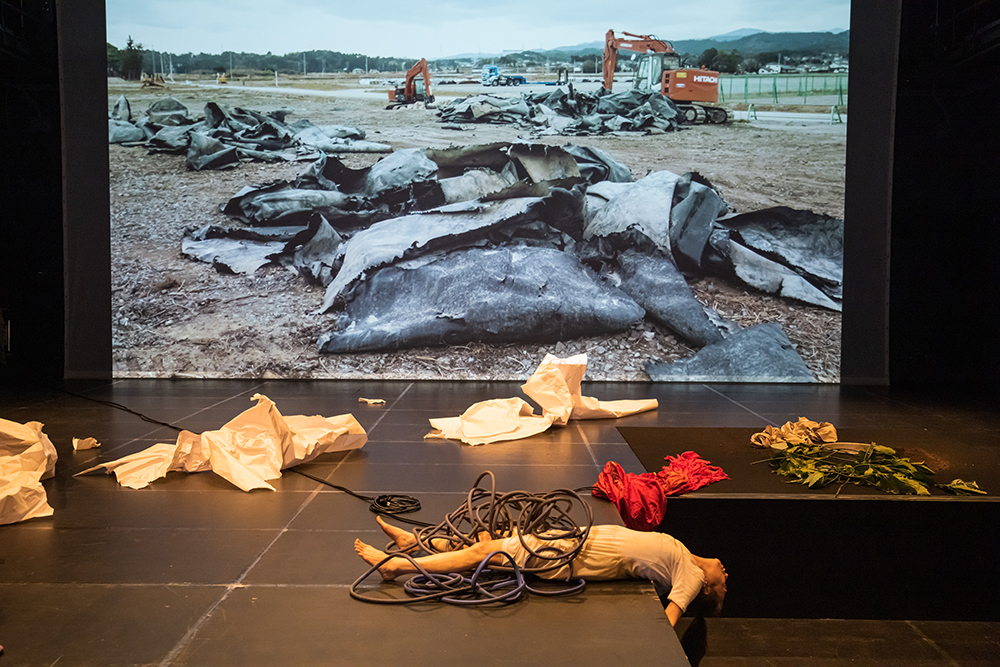
photo by Tatsuhiko Nakagawa
They have worked on many unusual pieces, such as dancing in a river and creating and installation in a caravan. They have been awarded the MacArthur Fellowing (1996–2001) and the American Dance Festival Award (2004). In 2011, the Walker Art Center published a book compiling their works Eiko & Koma: Time Is Not Even, Space Is Not Empty in conjunction with a retrospective exhibition that was held in various parts of the United States.
In 2014, Otake began a solo career. She has created three new works for TOKYO REAL UNDERGROUND, as part of her ongoing solo project A Body in Places.
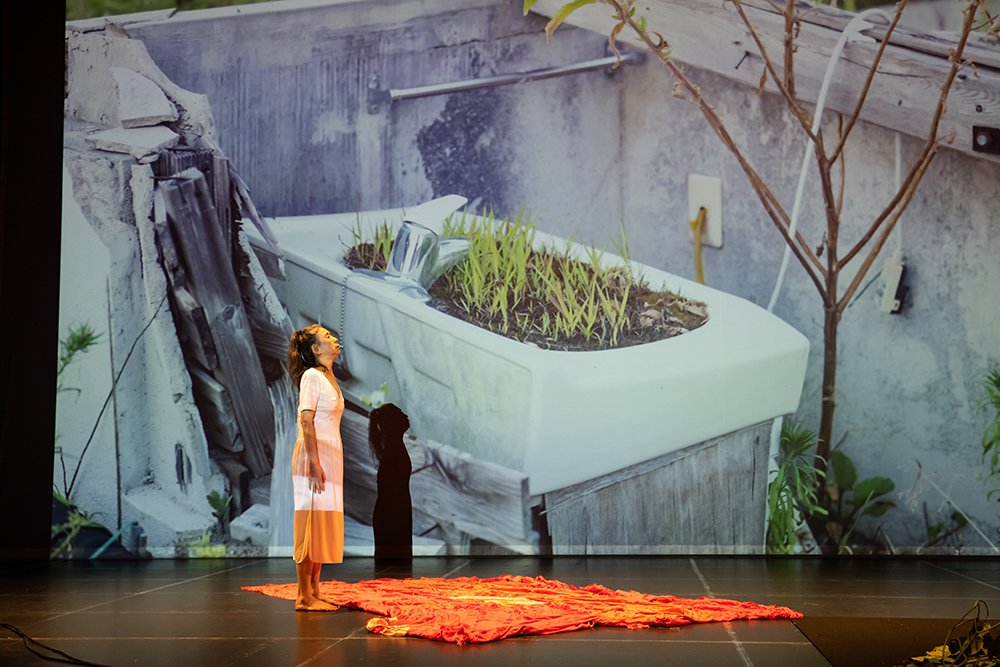
photo by Tatsuhiko Nakagawa
About A Body in Places
What experiences and thoughts do the history and reality of a place bring to the minds of a performer and viewer? What do their bodies leave in that place? A Body in Places is a project in which Otake places herself in spaces other than a traditional theatre and explores the possibilities of physical expression as she interacts with the place.
In the summer of 2011, while on a temporary visit back to Japan, Otake visited Fukushima after the meltdown with a high school friend. In 2014 she returned to Fukushima, this time with historian and photographer William Johnston, who took photographs as she performed at various sites with no audience.
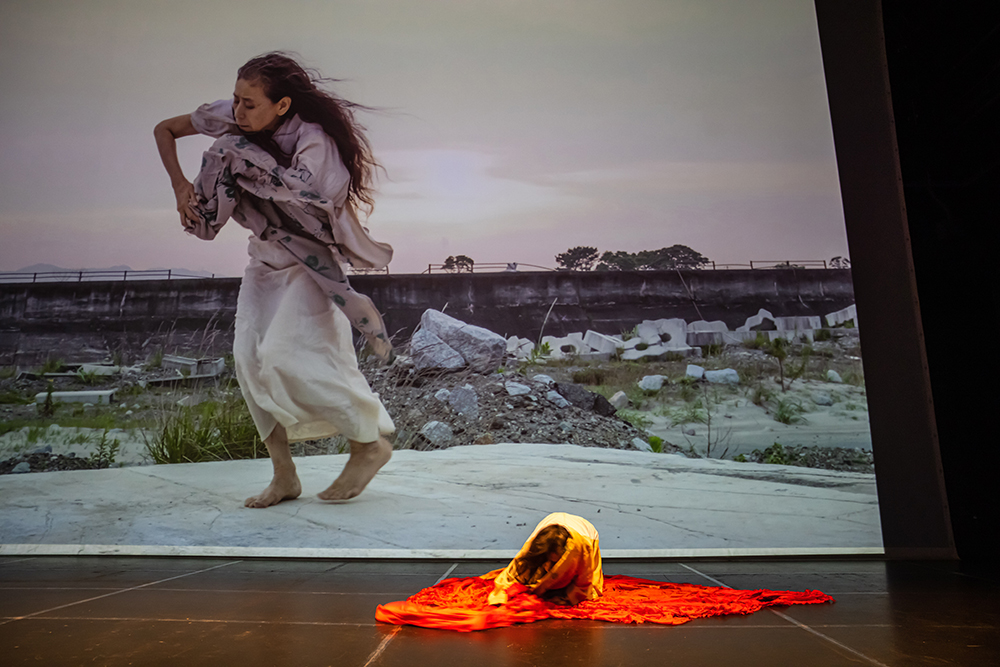
photo by Tatsuhiko Nakagawa
The large number of photographs taken became the basis for many variations of this project, including photography exhibitions at stations, churches and museums, as well as a film edited together by Otake, which she uses in her performance. She has performed this work in many places, including boutiques, restaurants and on the streets, questioning the distance between artists and audience, and their respective Fukushima.
Collaborator William Johnston is a professor at Wesleyan University and specialises in the history of disease and medicine in Japan. He has taught classes on the atomic bomb and nuclear power generation with Otake, and is also a Buddhist and photographer who is fluent in Japanese.
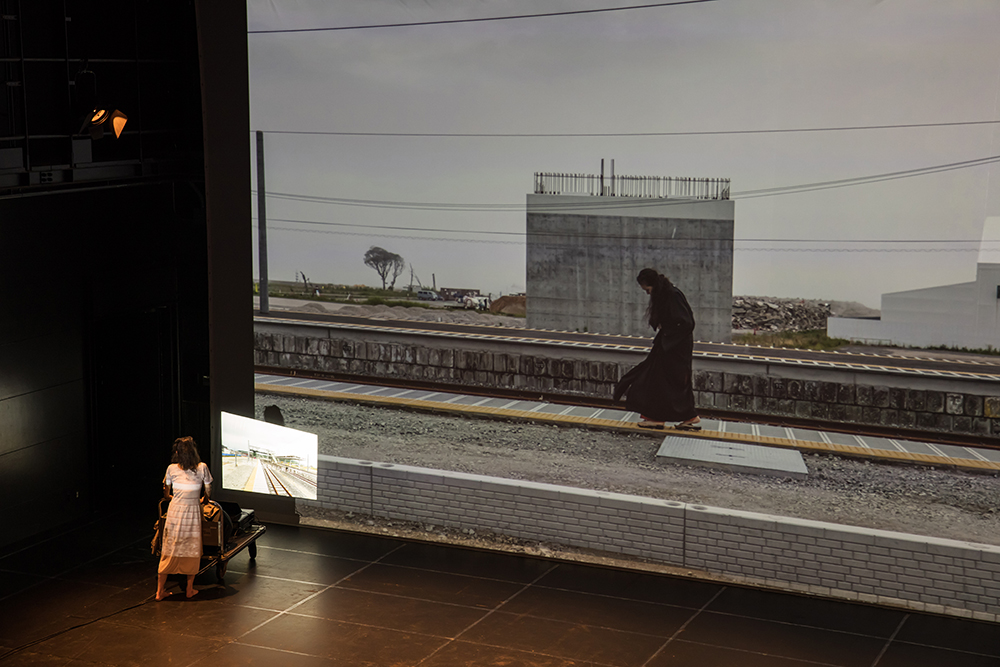
photo by Tatsuhiko Nakagawa
About A Body with Fukushima
A Body with Fukushima is a 25 minute edited version of Otake’s one-hour performance, which was performed with a video that was edited by Otake, of selected photographs taken by William Johnston during their five trips to Fukushima, projected onto the walls of the theatre.
Otake moves in response to the images of Fukushima, at times moving with the projection, or against it, coming to stillness, sometimes moving the projection itself by pushing a cart with a projector on it. Using the images of her body in the projection as a vessel to connect the here and now with Fukushima, she reflects on her visits there.
Followed by a talk with TRU Producer Toshio Mizohata and Curator Dai Matsuoka.
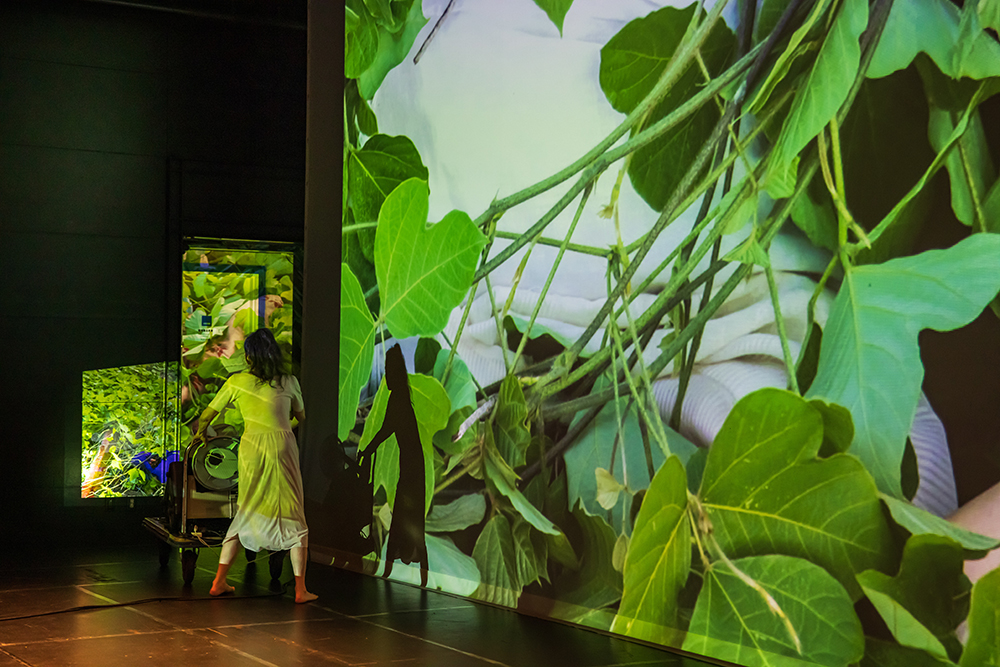
photo by Tatsuhiko Nakagawa
BUTOH Sunakku—World Edition - English Talk
A live discussion in English about Eiko Otake’s performance A Body with Fukushima that was aired last week (and is still available on the On Demand page). This is the first episode of the “BUTOH Sunnaku—World Edition” series, where we will be discussing Butoh and the TRU performances from the viewer’s perspectives in a casual atmosphere, bringing the values of Tokyo Real Underground to an international audience.
Airing at 9:00 Japan time (20:00 on 30 April EST) in order to make it easier for our American viewers to take part live, we will be hearing from Japan-based native English speakers Mai Honda, the English translator for the TOKYO REAL UNDERGROUND festival, Dr. Joseph Gashō Amato, the Director of Japanese Culture Promotion and Management, and Greg Dvorak, Professor of International Cultural Studies at Waseda University.
The chat will be open during this event, so come and get involved in the discussion!
Artist
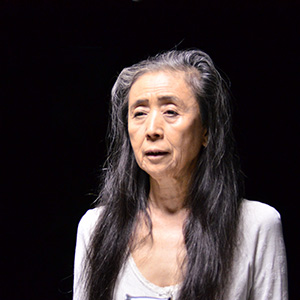
Eiko Otake
After studying with Tatsumi Hijikata and Kazuo Ohno in Japan in the 1970s, Eiko Otake studied with Manja Chmiel in Germany and Lucas Hoving in the Netherlands. She moved to New York in 1976, where she pursued a unique style of body expression as part of Eiko & Koma. In 2014 she began her solo career with A Body in Places, which has attracted much attention and been presented at the Whitney Museum of American Art, MoMA and the Walker Art Center, among others. She was the first Asian artist to win the ADF Awards (2004) and Dance Magazine Awards (2006).
Guest speakers
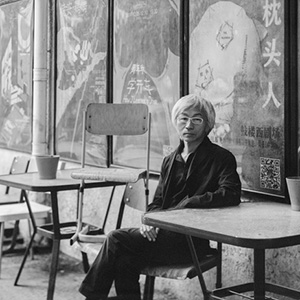 Photo by Zheng Yuanbo
Photo by Zheng Yuanbo
Toshio Mizohata
Joined the Kazuo Ohno Dance Studio in 1983, and became involved as a lighting technician for Kazuo and Yoshito Ohno’s performances both in Japan and abroad. He has produced events organised by the Kazuo Ohno Dance Studio, including Hyakkaryouran (2007) and Antony and the Ohnos (2010). Since 1990, he has been maintaining the Kazuo Ohno archives, and published many books, videos etc. including Kazuo Ohno’s Workshop Words. In 2004 he joined BankART 1929, and organised the Kazuo Ohno Festival. He established the non-profit organisation Dance Archive Network in 2016, which organises “Dance Archive Project” events, of performances inspired by archive materials.
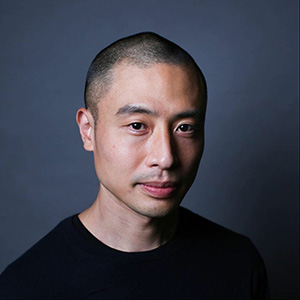 Photo by Maiko Miyagawa
Photo by Maiko Miyagawa
Dai Matsuoka
Dai Matsuoka has been performing with Sankai Juku since 2005, and has appeared in some of their major works including Kinkan Shonen, Tobari, Unetsu and ARC. Director of LAND FES since 2011, a festival that invites the audience to watch music and dance performances as they walk around the city. He has been an instructor for the Scramble Dance Project in Odawara since 2018, in which both people with and without disabilities create dances together. He also runs BUTOH CHOREO LAB, an online platform with video lessons by high-profile Butoh dancers.
http://daimatsuoka.com
English Talk - Speakers
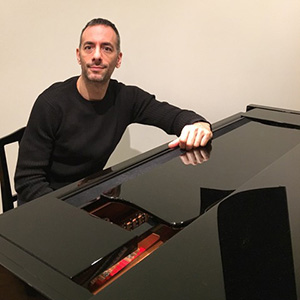
Dr. Joseph Gashō Amato
Dr. Joseph Gashō Amato received his Ph.D. in composition in 1998 from New York University with primary studies in Italian contemporary music. In 2000, he was awarded the prestigious Bunka-chō Japanese Government Artists Fellowship to pursue formal study of Japanese traditional musical instruments at Seiha Hōgaku-kai receiving his teaching license and professional name Gashō in 2003. He is founder and currently director of the Japanese Culture Program at Yokohama International School. Before this, Dr. Amato founded the YIS Japanese music program in 2003 and served as its director until 2011. Pursuing his work on sharing Japanese traditional music and culture on the international level, in 2017 Dr. Amato founded and currently serves as director of Japanese Culture Promotion and Management (JCPM), an NPO dedicated to supporting Japanese traditional arts and culture.
https://www.jcpm.jp/
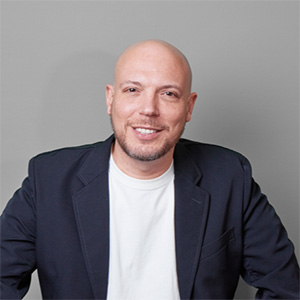
Greg Dvorak
Dr. Greg Dvorak is Professor of International Cultural Studies at Waseda University in Tokyo. His research and teaching focus is on Japanese and American postcolonial histories in Oceania, with an emphasis on transoceanic intersections of art, gender, and militarism in popular culture. He completed his MA at the University of Hawai'i (2002) and his PhD at the Australian National University (2008), with a concentration in Pacific Islands History. Founder of the grassroots art/academic network Project Sango, he serves as a co-curator for art from Northern Oceania in the upcoming 10th Asia Pacific Triennial of Art, and has helped to advise other exhibitions. Among other publications, he is the author of the book Coral and Concrete: Remembering Kwajalein Atoll between Japan, America, and the Marshall Islands (University of Hawaii Press, 2018, paperback 2020).
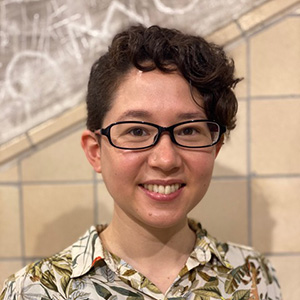
Mai Honda
Full name: Natasha Mai Honda Burns. English translator for the TOKYO REAL UNDERGROUND festival. Born in London to British and Japanese parents. After studying ballet for 8 years she became mostly involved in theatre, and worked as an actor, producer and silhouette artist while living in England. She encountered Butoh while studying for her masters degree in International Performance Research at the University of Warwick and University of Arts in Belgrade, and moved to Japan in 2016 to study with Yoshito Ohno. She currently works for Dance Archive Network, and continues her Butoh practice with Mitsuyo Uesugi.
http://www.tazburns.co.uk/
Credits
Performance
Eiko Otake
Photography
William Johnston
Editing
Eiko Otake
Music
David Harrington (Kronos Quartet)
Filming & Editing
NPO LAND FES
Cinematography
Dai Matsuoka
Photography
Tatsuhiko Nakagawa
English Subtitles
Mai Honda
Stage Management
Takashi Kawachi
Lighting Design & Projection
Noriyuki Mori (balance,inc.DESIGN)
Sound
Noriaki Coda
Set
Roshi (Sunagumi)
Producer
Toshio Mizohata
Organisers
Tokyo Metropolitan Government
Arts Council Tokyo (Tokyo Metropolitan Foundation for History and Culture)
Planning and Production
NPO Dance Archive Network


